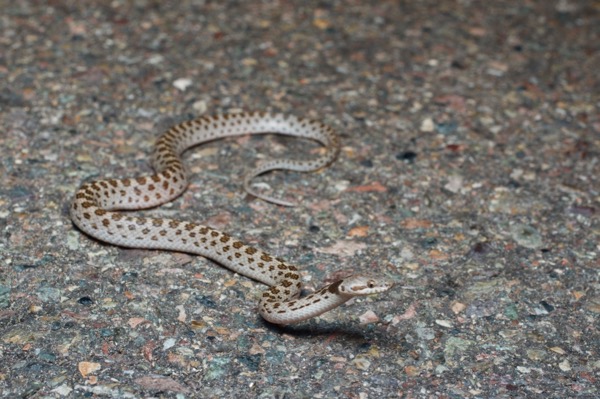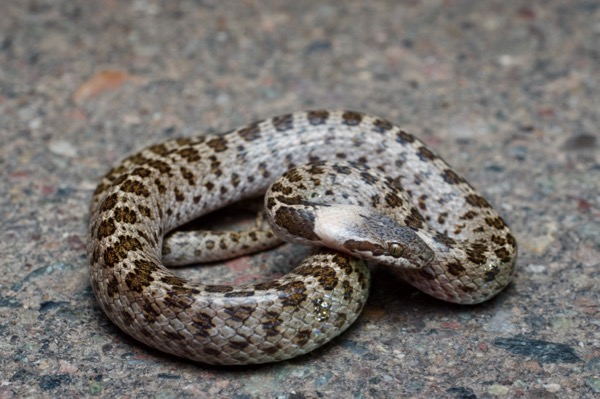Hypsiglena cf. chlorophaea "Alamos"
—
undescribed species

Recent studies have determined that the nightsnakes in this area should be considered a distinct species, split out from Hypsiglena chlorophaea. However, the actual description of this new species has not yet occurred, so they are in a sort of taxonomical limbo for the moment.

The white nape is a feature apparently found only on this yet-to-be described species of nightsnake. However, it is not present on all individuals (such as the first one pictured above).
Online references:
- Daniel G. Mulcahy, 2008. Phylogeography and species boundaries of the western North American Night snake (Hypsiglena torquata): Revisiting the subspecies concept
- Mulcahy DG, Martínez-Gómez JE, Aguirre-León G, Cervantes-Pasqualli JA, Zug GR (2014) Rediscovery of an Endemic Vertebrate from the Remote Islas Revillagigedo in the Eastern Pacific Ocean: The Clarión Nightsnake Lost and Found
Printed references:
- Rorabaugh, J.C., Lemos-Espinal, J.A. 2016. A Field Guide to the Amphibians and Reptiles of Sonora, Mexico